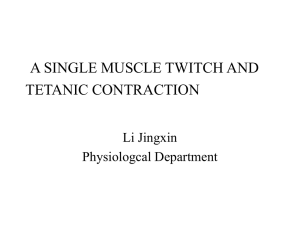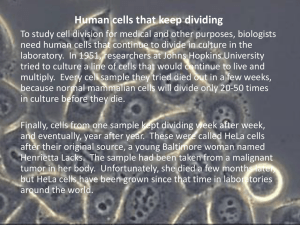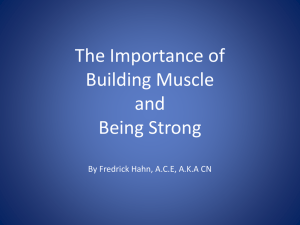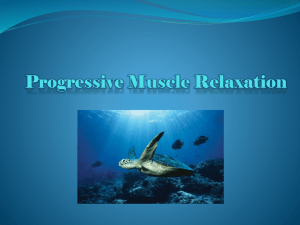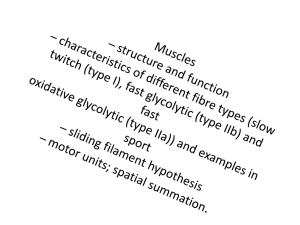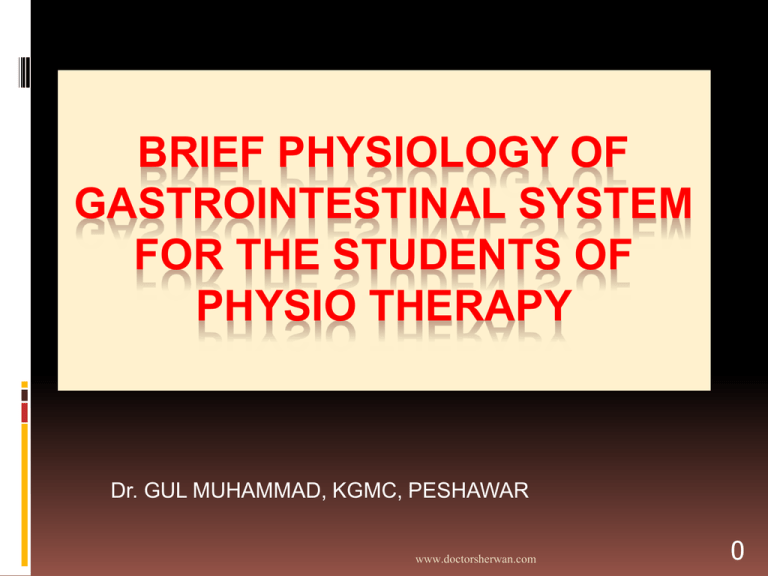
BRIEF PHYSIOLOGY OF
GASTROINTESTINAL SYSTEM
FOR THE STUDENTS OF
PHYSIO THERAPY
Dr. GUL MUHAMMAD, KGMC, PESHAWAR
www.doctorsherwan.com
0
General Functions
Provides the body with water, electrolytes and
nutrients
Requires:
1.
2.
3.
4.
5.
Movement of food
Break down the food to absorbable materials
Digestion of food by different juices
Absorption of digestive materials
Neural control
www.doctorsherwan.com
1
www.doctorsherwan.com
2
SMOOTH MUSCLE OF GIT
TWO SMOOTH MUSCLE CLASSIFICATIONS
Unitary type
- Contract spontaneously in the absence of
neural or hormonal influence but in response to
stretch (such as in stomach and intestine)
- Cells are electrically coupled via gap junctions
Multiunit type
- Do not contract in response to stretch or
without neural input (such as in esophagus & gall
bladder)
www.doctorsherwan.com
3
SMOOTH MUSCLE OF G.I.T
Phasic contractions
- periodic contractions followed by relaxation; such as in
gastric antrum, small intestine and esophagus
Tonic contractions
- maintained contraction without relaxation; such as lower
esoghageal, ileocecal and internal anal sphincter
- not associated with slow waves
www.doctorsherwan.com
4
SMOOTH MUSCLE OF G.I.T
Tonic contractions (continued):
- Caused by:
• Continuous repetitive spike potential
• Hormonal effects
• Continuous entery of Ca
www.doctorsherwan.com
5
The Musculature of the Digestive Tract
Two main muscle layers:
Longitudinal muscle layer
Circular muscle layer
Oblique muscle layer (stomach only)
www.doctorsherwan.com
6
The Musculature of the Digestive Tract
Longitudinal Muscle:
Contraction shortens the segment of the
intestine and expands the lumen
Innervated by ENS, mainly by excitatory
motor neuron
Ca influx from out side is important
www.doctorsherwan.com
7
The Musculature of the Digestive Tract
• Circular muscle:
Thicker and more powerful than longitudinal
Contraction reduces the diameter of the
lumen and increases its length
Innervated by ENS, both excitatory and
inhibitory motor neurons
More gap junctions than in longitudinal
muscle
Intracellular release of Ca is more important
www.doctorsherwan.com
8
www.doctorsherwan.com
9
www.doctorsherwan.com
1
0
www.doctorsherwan.com
1
1
www.doctorsherwan.com
1
2
Electromechanical &
Pharmacomechanical Coupling Trigger
Contractions in GI Muscles
• Depolarization opens the voltage-gated Ca
channels (electromechanical coupling)
• Ligands open the ligand-gated Ca channels
(pharmacomechanical coupling)
www.doctorsherwan.com
1
3
Gastrointestinal Peptides
Hormones
- endocrine cells
- via portal circulation and liver
- e.g., gastrin, CCK, secretin and GIP
Paracrines
- endocrine cells
- thru diffusion at the same tissue
- e.g., somatostatin (mucosa), to inhibit gastric H secretion
Neurocrines
- neuronal cells in GI tract
- e.g., VIP, GRP and Enkephalins
www.doctorsherwan.com
1
4
Slow Waves & Action potentials are Forms
of Electrical Activity in GI Muscles
Factors that depolarize the membrane:
Stretching of the muscle
Ach
Parasympathetic stimulation
Hormonal stimulation
Factors that hyperpolarize the membrane:
Norepinephrine
Sympathetic stimulation
www.doctorsherwan.com
1
5
CONTROL OF DIGESTIVE FUNCTIONS
BY NERVOUS SYSTEM
Autonomic nervous system (ANS)
is divided into
- Parasympathetic
- Sympathetic
- ENS (Enteric Nervous System)
www.doctorsherwan.com
1
6
CONTROL OF DIGESTIVE FUNCTIONS
BY NERVOUS SYSTEM
Parasympathetic Nerves:
• Located in brain stem & sacral region
• Projection to the G.I. are preganglionic efferents
• Vagus & pelvic nerves
• Vagus nerves synapse with neurons of ENS in
esophagus, stomach, small intestine, colon, gall
bladder & pancreas
• Pelvic nerves synapse with ENS in large
intestine
• Neurotransmitter is Ach
www.doctorsherwan.com
1
7
CONTROL OF DIGESTIVE FUNCTIONS
BY NERVOUS SYSTEM
Sympathetic nerves:
Located in thoracic & lumbar regions
Neurotransmitter is NE
NE increases sphincter tension
Inactivate the motility
www.doctorsherwan.com
1
8
www.doctorsherwan.com
1
9
Excitatory Motor Neurons Evoke Muscle
Contraction & Intestinal Secretion
1.
2.
Neurotransmitters of motor neurons:
Substance P
Ach
Neurotransmitters of secretomotor neurons (releasing
of water, electrolytes and mucus from crypts of
Lieberkuhn):
Ach
VIP
Histamine (neurogenic secretory diarrhea)
1.
2.
3.
www.doctorsherwan.com
Inhibitory Motor Neurons Suppress
Muscle Contraction
Neurotransmitters:
1. ATP
2. NO
3. VIP
N.B. Longitudinal muscles do not have
inhibitory motor innervation
www.doctorsherwan.com
www.doctorsherwan.com
www.doctorsherwan.com



